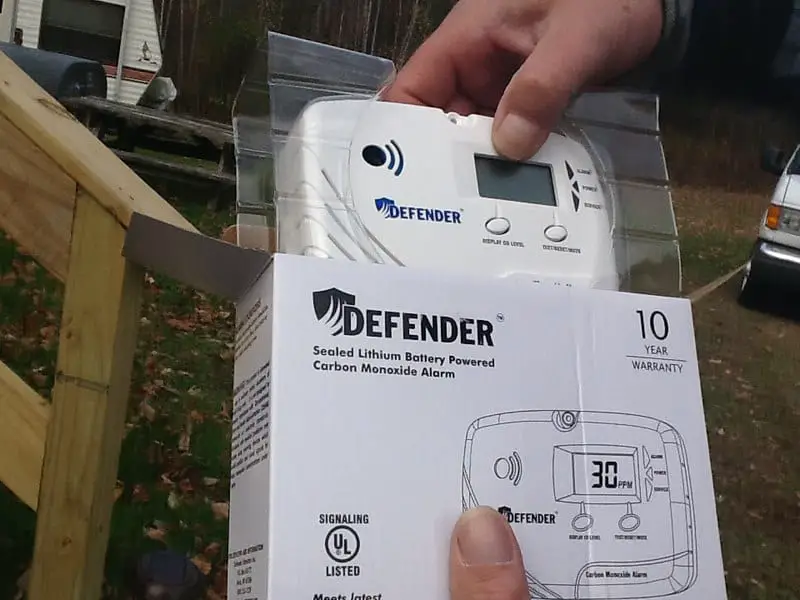Flames and smoke from a blazing fire are easily observable, but a home fire that starts in the dead of the night or one that begins in an empty room can spread widely without detection.
Depending on what’s nearby, a fire can spread very fast all over the room if you delay to put it out.
Carbon monoxide (CO) is an odorless, colorless, and dangerous gas that’s produced through incomplete burning. It’s produced in any fuel-burning fixture or appliance such as a water heater, furnace, or wood stove.
If the living space is poorly ventilated, carbon monoxide gas can build up over time to life-threatening levels.
It can also build up quite rapidly if the room is sealed tightly for energy efficiency reasons, reducing the amount of air flowing into and outside the space.
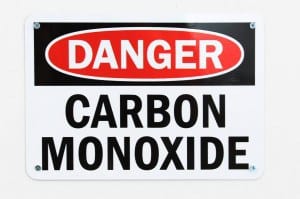
An attached garage in which a car is running too can produce enough carbon monoxide to seep into the living quarters of the home.
What makes carbon monoxide a dreadful gas is how it quickly replaces oxygen before forming a toxic compound in your blood when inhaled.
Twelve Manufactured Home Carbon Monoxide (CO) Detector Shopping Factors
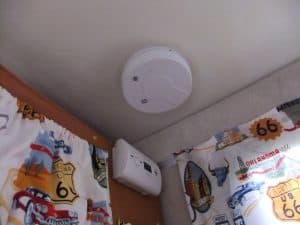
Are you planning to buy one?
Consider these factors:
- Must-have Features
- Type
- Brand
- Power Source
- Cost vs Budget
- Ease of Use
- Sensitivity
- UL Rating
- Maintenance
- Noise
- Installation
- Remote Alerts
1. Must-have Features
A carbon monoxide detector will serve as an alert system, promptly letting you know the presence of fumes and CO gas in the air.
For that reason, not only do you want it to be very alert, but also want it to be an easier item to run.
That’s why you need to pay attention to the onboard features – if the device lacks some features, it may prove difficult to use. Check out for these features:
Voice Notification
Voice notification is a must-have on carbon monoxide alarms. Some models will let you program them or choose from preset location settings.
When the alarm goes off, the voice warning shows the location and type of the detected threat.
Networking
Choose a product that’s equipped with a linking feature allowing you to connect all the compatible units so that all linked units set off the alarm when one node detects a threat.
A networked CO gas detector covers the whole home, including the least occupied spaces like the garage and the basement.
If you install wireless units (which can be installed and run without the need for wiring), be careful with the range of operation and placement restrictions for the linking features.
Central Management System
Choose a detector that lets you connect to other home management systems so that it can send mobile alerts to all linked devices when the alarm goes off.
Silencing feature
You don’t want the alarm to ring unabated in case of a false reading. Choose a unit with a silencing feature that lets you temporarily stop false alarms for a given period.
Status Alerts
You want a device that will let you know when the battery runs down or in case of a malfunction. Choose a product with audible status alerts, like the end of life (CO detectors don’t run indefinitely), low battery, or any other indication that the device needs attention.
Display Screen
A display screen will show all the status details about the device including battery level, current modes/settings, end of life, and low battery.
When the detector and the alarm go off, some models may display the level of the gas, the location, and other similar pieces of information.
Some carbon monoxide detectors also display the peak CO levels recorded in a given period.
2. Type
Here are some of the commonly used types of CO detectors:
Biomimetic Detector
This type contains a strip of synthetic hemoglobin – the hemoglobin darkens when exposed to the carbon monoxide gas.
There are also two types of this detector:
- Those that require you to look at them to determine the presence of the gas and
- those that link to light sensors and sets off the alarm if carbon monoxide is detected.
Electrochemical detector
An electrochemical detector utilizes an electric current to measure the amount of carbon monoxide in the air.
If the level is found to be significant enough, the highly accurate detector informs you by triggering the alarm.
Semiconductor Detector
The presence of significant gas levels in the room allows an increased current to set off the alarm by reducing the level of resistance in the semiconductor sensor.
Plug-in alarms


Probably the most convenient type of detector out there.
What sets them apart from others is their ease of installation – just plug it into an electrical socket in your home and wait for the alarm.
Better yet, most plug-in carbon monoxide detectors contain a battery back-up that will provide power and maintain protection in case your home loses power.
Some plug-in detectors are dual function i.e. they can detect both carbon monoxide and common explosive gases (more on this later).
For more convenience, choose a unit with a backlit digital screen to give a clear read in dark environments.
Combination detectors


If your home is under the threat of carbon monoxide, smoke, plus other gases such as cooking gas and propane leakage from your heating line, go for a combination detector.
Most of the 2-in-1 detectors you will find are quite costly although this can depend on the technology inside them – the high cost is mostly because of the multiple functionalities.
Go for a multiple function detector that can be programmed to give voice alerts and indicate the specific danger as well as the exact location of the threat in your house.
Most of these combination detectors come with a long life battery – can be as long as 10-years – even though it serves as back up to your household electricity.
Smart CO detectors
When this type of device detects dangerous levels of CO gas in the air, it sends a text message to your smart device (can be your smartphone, smart TV, or your tablet computer) as well as produce a sound.
If you are a tech-savvy individual or you are always connected with your devices, this is the best carbon monoxide detector for you.
However, note that these devices normally require you to pay a premium fee to stay connect across different devices.
A good example is the popular Nest Protect Smoke & CO Alarm, costing about $95 – that’s about four times what you may pay for a conventional detector.
It’s actually a 2-in-1 smart device, so that’s understandable. Early versions last for over seven years before requiring a replacement. The second-generation lasts for 10 years.
Here is a complete review of the Nest Protect Smoke & CO Alarm.
3. Brand
The world of carbon monoxide detectors is a crowded one.
Choose a detector from a popular brand that avails its products widely in all popular stores: Amazon and Target, Walmart, Micro Center, TechBargains, and Best Buy.
Established big stores like these will only sell detectors from well-known brands.
Cheap alarms may be affordable and even easier to find both online and locally but may not be the best bet for you as they often don’t come with a reliable warranty and are prone to malfunctions.
You should be able to find a CO detector made by
- Google (the Nest family of detectors)
- Kidde (such as Kidde KN COPP B LPM),
- and First Alert (First Alert CO615).
4. Power Source
In terms of power supply, CO detectors can be grouped into three: hard-wired, battery-operated, and plug-in.
Hard-wired models are linked with each other before being connected to the household power supply.
In the event of a blackout, the detection system will be rendered useless. That’s why every hard-wired unit needs to be accompanied by a battery backup).
Battery-operated detectors are easier to install and stays active even when your home experiences a power outage.
You can opt for plug-in units equipped with battery backups.
The biggest flaw with plug-in units is that, given the fact that carbon monoxide gases rise (pretty every other gas does), the usual placement of power outlets (close to the floor) can make them highly imperfect.
In any situation that involves batteries, remember to replace them once every six months.
5. Cost vs Budget
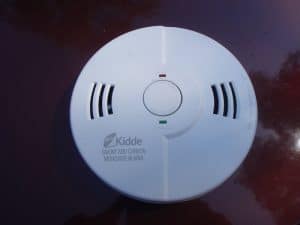
Everyone should own a quality CO detector in their house (and large homes should have multiple detectors), but not everyone is willing to splurge on one. If keeping expenses low is necessary for you, you should not have much issue.
Decent CO detectors don’t even need to be expensive. Genuine products with price tags in the region of $15 are commonplace.
The price is normally inclusive of the cost of batteries which take many years to run down. Most people can collect up to $15 for a functional item that will offer life-saving service for a very long time before replacement.
If you have money to burn, it opens up several options for you.
You can explore a diverse range of carbon monoxide detectors from high-end margin to those laden with impressive features like voice notifications, convenient digital display, or silence buttons for fake alarms.
You just need to spend several times what you would’ve spent on an average unit. If the purse allows, you can always upgrade to a smarter CO plus smoke detectors – one may cost about $100.
Whatever you choose to do, don’t let the price tag be a hindrance to buying a detector of your liking. Still, you can go with the cheaper and simpler models especially if that is what you really need.
6. Ease of Use
How easy is it to use the CO detector of your liking?
Most detectors are generally simple machines, so you won’t have any problems with installation or use. Even so, some products may be much easier for some buyers to use than alongside other devices.
Battery-powered devices will need battery replacements once after some time, normally years.
But that can be a bit hard for some people because you are usually required to open the entire device, locate the battery slot, replace the battery, then return the unit as it was before.
You want a device that makes it easier to figure out the best way to replace the battery as well as faulty parts and even do tests.
Most detectors nowadays come with intuitive “test” buttons very much like your Wi-Fi router. And if you choose to go for the smoke + CO detector combination, the “silence” button will be important if the device begins to trigger false alarms.
A digital display makes it easy to check the CO status of your home and set your preferences at any time, even if your alarm hasn’t been triggered yet.
And a CO detector made to last for a long time will save you the problem of being forced to replace it as soon as you install it.
7. Sensitivity
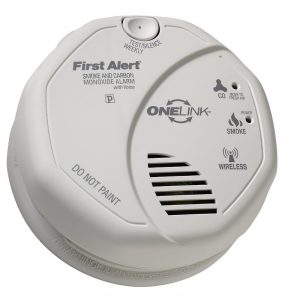
Consider the sensitivity of the model of your liking.
Of course, you want the most sensitive unit available – one with a very small error range and one that lets you when there are even tiny amounts of CO gas in your home.
Most CO detectors in the market today are designed towards alerting people to the high levels of carbon monoxide deemed to cause serious issues in healthy adults although lower levels can still cause milder problems depending on the exposure period.
Tiny levels of the gas can also be devastating for kids or anyone with a preexisting condition that with carbon monoxide as a co-factor.
If you are looking for a detector capable of alerting you to any amount of carbon monoxide above normal, not those that simply reach the emergency status, then go for a low-level detection product.
Alternately, you opt for one with an LCD screen that shows you the gas levels all the time, so you can easily check it once in a while.
8. UL Rating
The UL Rating seal on a product means that the item has been tested by UL (Underwriters Laboratory) for nationally recognized sustainability and safety standards.
Additionally, it means the product is free from foreseeable fire risk and electric shock (only in Division 2 conditions/environment).
If you are not inclined to specifically look for a low-level CO detector, then go for any detector with a UL rating.
If your home is based in a locality with specific regulations about the kind of carbon monoxide detector to use, start by understanding those rules and then get a UL-rated unit if it satisfies the requirements.
9. Maintenance
Maintenance on these detectors is quite simple most of the time.
Most of them support periodical tests, often once a month, by pressing a “test” button.
However, you will need to hire a qualified technician to install and conduct maintenance work or even repair once after a few years.
Batteries will need replacement periodically (only for those battery-powered models or hardwired models with backup batteries). You are expected to replace your CO detectors every 5 – 7 years.
10. Noise
For a detector to work you, it has to produce loud a sound to alert anybody in the house immediately the gas levels shoot up.
For that reason, choose a unit that’s loud enough to literary wake up the dead.
Most manufacturers will indicate the decibel level (or how audible the system is) for their detectors. It’s almost standard for carbon monoxide detectors to come with a noise rating of 85 decibels.
Some models offer the option for voice alarm.
These products can prove useful when you have more than one connected detector, as they can give more details about the source of the gas and whether it’s a CO gas alone or it’s mixed with smoke.
For households with individuals with hearing impairment, you can go for one of those detectors that use bright strobe lights instead of sound to alert them.
11. Installation
Installation for carbon monoxide detectors is usually a simple task that most homeowners can do all by themselves.
Battery-powered products are the easiest to install, then hardwire models.
Even the most sophisticated CO detectors can be manageable for most people, provided you adhere to the instructions provided by the manufacturer.
If you don’t have the necessary DIY skills but you still want to install it yourself, you can hop online and check the instructions or reviews in advance before choosing a model of your liking.
12. Remote Alerts
Wouldn’t it be great if you received alerts via your phone?
One of the top appeals of smart CO detectors is that the user must not be at home to get the notification.
Smart detectors will notify you wherever you are, all you need is to download the app, connected the devices, and you’ll be notified on your smartphone anytime the gas levels or smoke builds up to unsafe levels.
So, instead of returning home to a surprise, you can rush home or alert the authorities to rectify things.
Conclusion
Buying the best carbon monoxide detector for your home is no walk in the park unless you know what you want.
Also, because there are many of them in the market, you need to bear in mind a few factors. Also, remember to write down the features you want the product to possess.
Consider your list of must-have features, type of detector, brand, power source, cost, ease of use sensitivity, UL rating maintenance, noise installation, and remote alerts.

